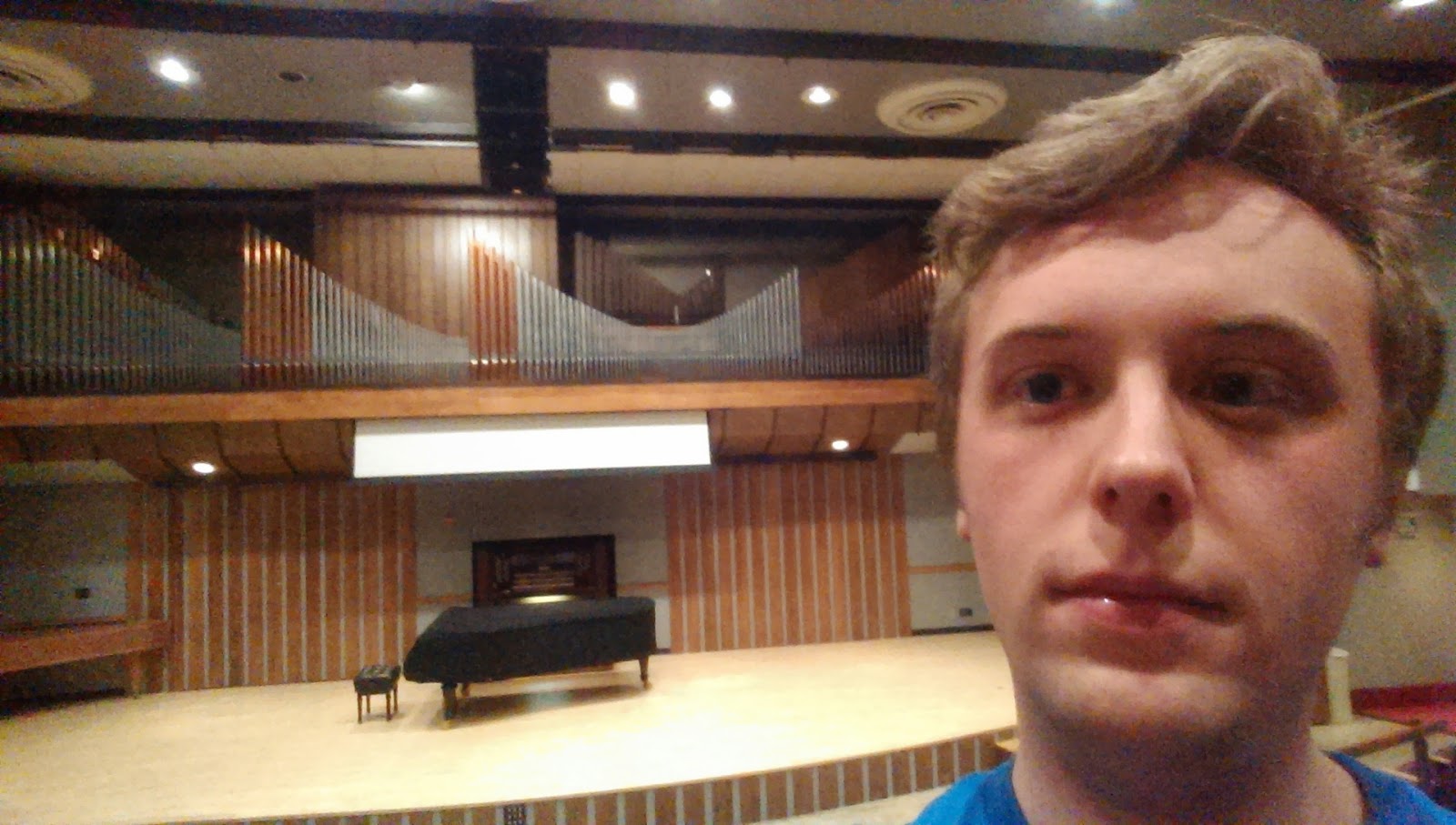Anyway, more about this organ. It was built in 1969 by E. F. Walcker & Sons of Germany, and rebuilt and tonally remodeled in 1989 by Kenneth Jones & Company of Ireland. It has 3 manuals (keyboards) and, of course, the pedalboard, which consists of 32 keys played by the feet. It only has one division in expression, so it only has one expression pedal and no crescendo pedal. Yet this organ has some great sounds!
I have been back to this organ several times since March 7th, and I have discovered some things I really love about it. It has a lovely oboe stop, written in French, "Hautbois," as well as some great string sounds, and lovely flutes. The Gemshorn is also a favorite of mine. (Don't worry about these names, I'll explain these in another post soon.) It also has some cool mixtures, one of which has a very bright and sharp tone. It is the Cymbal 3-pipe mixture in the Positive division.
Anyway, here are some pictures of that night. As you can tell by my smile when I'm near the console, it was a great night!
Here you can see the facade. This is what we call an open-pipe facade, since the majority of the pipes are simply standing on their wind chests without any wood surrounding them. (Sorry about the facial expression, I didn't have much selfie-taking experience at the time.)
This isn't an organ, but it's a $50,000+ Shigeru Kawai piano that was on the stage for a recital later that night. These are much more carefully crafted than your average Kawai piano. The soundboards are made from a specific type of wood and aged for an extended amount of time before becoming a piano. The action is partially made from carbon fiber, so nothing expands or contracts when the piano is moved between climates of varying humidity. After I played this piano, it made the $20,000 Yamaha grand piano sitting nearby feel extremely cheap, and that's something I never thought I'd hear myself say!
So that was my first venture into the world of pipe organs. I hope you enjoyed reading this as much as I did writing it!
Organ Specifications:
Built By: E. F. Walcker & Sons, rebuilt & tonally remodeled by Kenneth Jones & Associates
Opus Number (if indicated): 5258 (Walcker)
Year: 1969, Remodeled 1989
Manuals: 3
Ranks: 51
Location: Madsen Recital Hall, Harris Fine Arts Center, Brigham Young University, Provo, UT 84602
Madsen Recital Hall - Stoplist



No comments:
Post a Comment